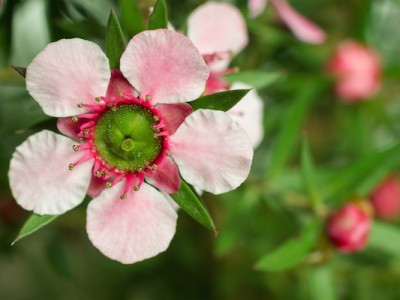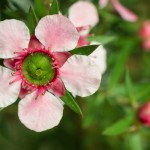Product: Manuka Oil
Manuka Oil New Zealand Leptospermum scoparium
-
Description
New Zealand Manuka is a shrub that can grow in the wild as high as 8 metres tall. Known as Manuka it can also be referred to as Red Manuka or Kahikatoa locally. The botanical name is Leptospermum scoparium. Many mistake Manuka for Kanuka, as Kanuka can be known as White Manuka. However this is Kunzea ericoides another product offered growing in Tasmania, Australia.
The oil is extracted from the aerial parts of the plant by steam distillation. East Cape Manuka is known for its many unique properties and is grown and harvested wild. Harvesting can be difficult as the better quality oil comes from plants situated in coastal hillside areas exposed to wind and salt where the soil can at times be both very wet and dry.
Manuka Oil has exceptional scientific pharmacological efficacy. Scientific research on New Zealand East Cape Manuka oil (MTK™ > 20%) is showing it has unique and superior antimicrobial properties (amongst many others) compared with oil sourced from other geographic regions within New Zealand; this is attributed primarily to the high ß-triketone content. In particular there is very strong antibacterial (against Gram-positive bacteria), antiviral and anti-parasitic activity.1
The oil itself consists of over 100 individual chemical components. The majority of the chemical components (molecules) that constitute Manuka essential oils and other essential oils are terpenoids; namely monoterpenes (C10 terpenoids), sesquiterpenes (C15 terpenoids) including oxygenated hydroxyl and carbonyl derivatives (aldehydes, alcohols and esters).2
Terpenoids are the largest class of natural products, while terpenes have a variety of roles in mediating antagonistic and beneficial interactions among organisms. They defend many species of plants, animals and microorganisms against predators, pathogens and competitors, and they are involved in conveying messages to conspecifics and mutualists regarding the presence of food, mates and enemies.3
Genuine pure New Zealand East Cape Manuka oil is also remarkably high in another defined group of compounds known as ß-triketones. In general Manuka oils from different geographic locations around New Zealand can be simplified into 3 basic chemotype groups based on the ratio of the monoterpenes: sesquiterpenes: ß-triketones. Further chemotype groupings can be defined based on individual compounds within the oil.4
Ultra are pleased to offer oil from the East Cape of New Zealand containing high Manuka ß-triketones harvested and distilled by ‘Manuka Oil TriketonesTM’
1,2,3&4 Manuka Oil TriketonesTM
-
Product Details
- Botanical name: Leptospermum scoparium
- Origin: New Zealand
- Crop Season: April - October
- Plant/part used: Leaves and Twigs
- Method of extraction: Steam Distillation
- TSCA CAS: 219828-87-2
- Appearance: Pale yellow to yellow mobile liquid
- Organoleptic Properties: Earthy, green, medicinal notes
- Density: 0.920 - 0.990
- Refractive index: 1.496 - 1.506
- Chemical constituents: Cadina-3,5-diene, cardina-1,4-deine, t-calamenene, alpha selinene, beta selinene, alpha copaene
-
Latest Market Information October 24, 2024
Manuka oil is slowly but steadily gaining traction in the personal care segment. Manuka possesses powerful antimicrobial properties. Upon further research it is proving highly effective in controlling odour-causing bacteria. Brands are impressed by these positive findings and are increasingly adding manuka to their deodorant formulations. The oil is also sustainable and natural making it an attractive buy for today’s customers who are environmentally conscious and seeking natural solutions. Manuka has the potential to be the most attractive ingredient in innovative deodorant solutions.
Manuka, scientifically known as leptospermum scoparium, is native to New Zealand and certain coastal areas in Australia. It is an adaptable tree grown and harvested in the wild. It flourishes in coastal regions and at higher altitudes. It can also sustain a broad range of temperatures and changes in climate. It can endure high speed winds, poor soil, and severe environments. It can forge roots in cliffs and swampy wetlands.
Market prices : USD 655.00 /kilo -
Product Enquiry
To ask us a fair quote for this product, please fill the following form:
-
Documents & Links
 Ultra International B.V.
Ultra International B.V.



